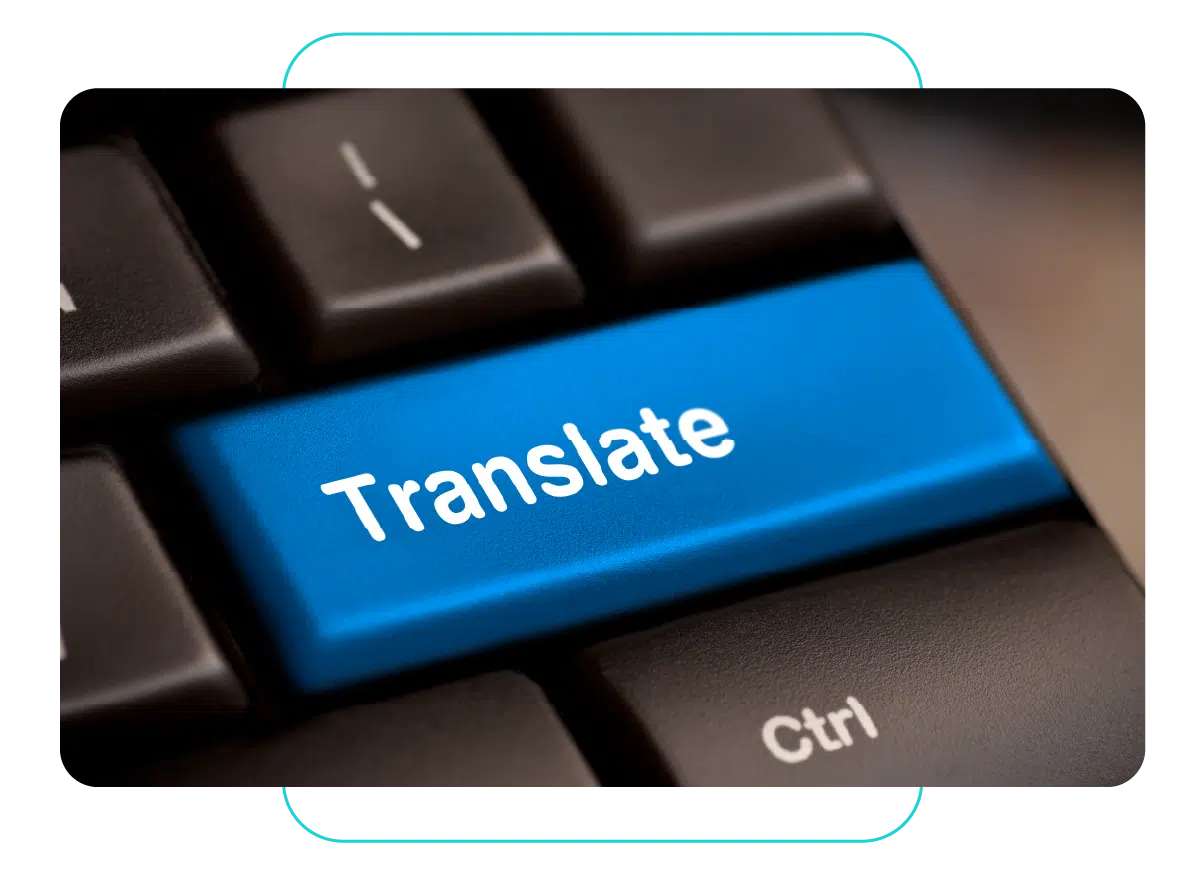Reliable, Accurate Document Translation
Document translation focuses on converting text from one language to another with accuracy and clarity, making it ideal for materials that don’t need cultural adaptation. This approach works well for documents with straightforward content—such as technical manuals, legal agreements, and compliance materials. By keeping content precise and accessible, document translation helps industries like healthcare, finance, and technology communicate clearly across languages, providing consistency and understanding for audiences worldwide

When to Use Straightforward Translation vs. Localization
Certain documents benefit from straightforward translation, focusing on accuracy rather than cultural adaptation. This approach is ideal for materials where clear, consistent information is the priority, helping businesses save time and resources. Here are examples of when direct translation is the best choice:
Provides technical instructions without needing cultural adaptation.

The Value of Professional Translation
Professional document translation offers consistency, accuracy, and efficiency—key advantages for businesses managing multilingual content. By keeping terminology and phrasing uniform across documents, especially in technical or industry-specific contexts, professional translation preserves clarity and minimizes errors. With reliable translations, information stays accurate across all markets, reducing misinterpretation and helping businesses build trust with audiences worldwide.
Machine Translation
Machine translation (MT) is a practical option for projects requiring speed, scalability, and cost savings. It efficiently handles large volumes of content, providing a quick solution that’s ideal for businesses with tight timelines or high translation demands. For additional precision, MT can be enhanced with human editing options, allowing clients to balance speed with accuracy based on their specific needs.


Human-in-the-Loop Editing for Machine Translation
Machine translation can be enhanced with human review to improve accuracy and clarity, offering two main levels of post-editing based on content requirements:
- Light Post-Editing: This level involves minimal human intervention, focusing on basic adjustments to improve readability and general comprehension. It’s ideal for internal documents or content where a rough understanding is sufficient, helping to reduce costs while still enhancing the machine-generated output.
- Full Post-Editing: Here, human translators perform a thorough review, refining the text to ensure accuracy, fluency, and contextual appropriateness. Full post-editing is recommended for public-facing or sensitive content, such as marketing materials or legal documents, where high-quality, polished translation is essential.
Why Partner with Propio for Document Translation?
Partnering with Propio for document translation means working with a team committed to understanding and meeting each client’s unique needs. Our client-centered approach focuses on delivering reliable, precise translations tailored to your specific requirements. With a network of experienced professionals, Propio brings specialized knowledge across a range of industries, from technical and legal fields to sector-specific language needs. This expertise allows us to provide accurate, industry-informed translations that maintain consistency and clarity, supporting successful communication across all markets.

Industries we Serve
With nearly 30 years of experience, we provide specialized language solutions tailored to each industry’s specific needs.
Ready to Start Translating Your Documents?
Propio is here to support your document translation needs with a focus on clarity, accuracy, and efficiency. Whether you’re managing technical manuals, legal documents, or industry-specific content, our team can help you find the right approach to ensure your message is clear and consistent across all languages. Reach out to discuss your goals and learn how we can provide a seamless translation experience that aligns with your project requirements.